Working on a business continuity plan? 6 questions you need to ask first…

What is business continuity planning?
Business continuity planning is about having a recovery plan in case of events like:
- Fires
- Floods
- Other natural disasters
- Cyber-attacks
It means protecting against anything that can bring your business to a halt. Most Australians are familiar enough with natural disasters to be aware of the possible impact on a business.
Protecting your business and your assets in just good common sense.
But where do you start?
Following are six questions you should ask before starting your business continuity plan.
1. What are the potential risks for my business?
The first step to protecting yourself against potential threats is to identify them.
In Perth, your potential risks probably do not include icy conditions or frozen pipes.
Instead, you should be thinking about issues such as loss of heat, fires, and wind or water damage.
For a better idea, look at the area in which you conduct your daily operations and assess property damage risks.
2. How will I inform stakeholders if disaster strikes?
Having a communications plan is a crucial part of business continuity planning.
An e-mail alert system, phone, and social media are all useful ways of keeping employees and key stakeholders up to date with the situation.
Make sure that you can access all these platforms on your mobile phone so that you can keep everyone updated and let them know that you're still in business!
3. How important would IT recovery be for returning to daily operations?
If returning to normal IT operations is a key part of getting your business back on track, consider implementing an IT recovery plan.
This could help reduce downtime and allow employees to get back to work quickly and efficiently.
4. Do I have enough insurance?
Contact your insurer to discuss whether your policy is appropriate for your needs.
Having a good insurance policy will help you rest easy, even in the event of an emergency.
5. Am I backing up important data?
Whether you are doing it through Dropbox, iCloud, Google Drive or another backup provider, it is essential that your company's vital information, including invoices and records, are kept safe.
6. Is my plan workable in the real world?
Your business continuity plan should be tested by running drills with your staff. This will help you fix any imperfections and make sure that you have a workable plan before disaster strikes.
Working on a business continuity plan now or in the near future?
If you’re a Perth small business and need help putting your plan together, or any other small business advice, our friendly team is waiting for your questions.
Need help with your accounting?








